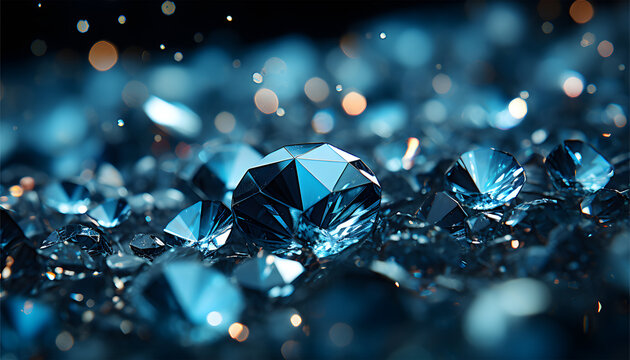Introduction
In recent years, the jewelry industry has witnessed a revolutionary shift with the advent of lab grown diamonds. Once considered a niche product, these diamonds are now making significant waves in the market. Understanding their production, benefits, and future prospects is crucial for anyone interested in sustainable luxury.
What are Lab Grown Diamonds?
Lab grown diamonds, also known as synthetic or cultured diamonds, are created in controlled laboratory environments rather than through natural geological processes. Despite their human-made origin, they share the same chemical composition and crystal structure as natural diamonds.
How Lab Grown Diamonds Are Produced
The production of lab grown diamonds are the future involves advanced technological processes that replicate the conditions under which natural diamonds form deep within the Earth’s mantle. High pressure and high temperature (HPHT) or chemical vapor deposition (CVD) methods are utilized to grow these diamonds atom by atom.
Benefits of Lab Grown Diamonds
Lab grown diamonds offer several compelling advantages over their natural counterparts, making them a preferred choice for many consumers today.
Environmental Impact
Unlike traditional diamond mining, which often causes environmental disruption and carbon emissions, lab grown diamonds have a minimal ecological footprint. They require less energy and do not involve destructive mining practices.
Ethical Considerations
One of the most significant advantages of lab grown diamonds is their ethical sourcing. They are free from the ethical concerns associated with mining, such as labor exploitation and conflict financing, providing consumers with a guilt-free alternative.
Quality and Purity
Contrary to misconceptions, lab grown diamonds are of exceptional quality and purity. They exhibit the same brilliance, clarity, and durability as natural diamonds, meeting stringent industry standards.
Comparison with Natural Diamonds
Understanding the differences between lab grown and natural diamonds helps consumers make informed decisions based on their preferences and priorities.
Cost Effectiveness
Lab grown diamonds typically cost 20-30% less than natural diamonds of comparable quality, offering affordability without compromising on beauty or durability.
Physical Properties
Both types of diamonds share identical physical properties, including hardness and refractive index, ensuring that lab grown diamonds are as durable and radiant as their natural counterparts.
Market Trends
The market for lab grown diamonds is experiencing rapid growth as more consumers recognize their value proposition and ethical advantages.
Applications and Uses
The versatility of lab grown diamonds extends beyond traditional jewelry applications, influencing various industries and creative designs.
Jewelry Industry Adoption
Leading jewelry brands and designers are increasingly incorporating lab grown diamonds into their collections, catering to eco-conscious consumers seeking sustainable luxury.
Industrial Uses
Beyond jewelry, lab grown diamonds are utilized in cutting-edge technologies, such as quantum computing and high-performance electronics, due to their superior thermal and optical properties.
Challenges and Concerns
Despite their numerous benefits, lab grown diamonds face challenges that influence consumer perception and market dynamics.
Perception and Marketing
Educating consumers about the value and authenticity of lab grown diamonds remains a pivotal challenge in the industry, as many still equate diamonds with natural scarcity and prestige.
Longevity and Durability
Questions about the long-term durability and resale value of lab grown diamonds persist, influencing consumer confidence and investment decisions.
Future Prospects
The future of lab created diamonds looks promising, driven by technological advancements and evolving consumer preferences.
Technological Advancements
Ongoing research and development are enhancing the efficiency and scalability of lab grown diamond production, promising higher quality and lower costs in the future.
Consumer Preferences
As awareness of sustainability grows, more consumers are expected to favor lab grown diamonds over natural diamonds, driving market demand and innovation.
Industry Growth Outlook
Analysts project robust growth for the lab grown diamond market, fueled by shifting consumer attitudes and advancements in production technology.
Conclusion
In conclusion, lab grown diamonds represent not only a technological marvel but also a sustainable and ethical choice for conscientious consumers. As the jewelry industry continues to evolve, these diamonds are poised to play a pivotal role in shaping the future of luxury and technology.




